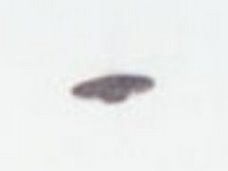 In 1323 B.C., a young Egyptian king died. His name was Tut.ankh.Amum - "the living image of Amun". Tutankhamun is the best-known pharaoh of ancient Egypt. He was probably the son of Akhenaten, the heretic king of the eighteenth dynasty. His mother was probably Queen Kiya, one of the king's secondary wives. Ankhesenpaaten (or Ankhesenamum), his older half sister, became his queen. He ascended the throne in 1333 B.C., at the age of nine, and reigned until his early death at the age of about eighteen. Some speculate that he was murdered and others think he may have been deliberately sent into battle to be killed. However, the exact cause of his death is unknown. Those who believe he was murdered point to the hole in his skull as evidence, but some experts believe the hole was made after his death. His mummified body was so badly preserved that we may never know the true fate of this minor pharaoh.
In 1323 B.C., a young Egyptian king died. His name was Tut.ankh.Amum - "the living image of Amun". Tutankhamun is the best-known pharaoh of ancient Egypt. He was probably the son of Akhenaten, the heretic king of the eighteenth dynasty. His mother was probably Queen Kiya, one of the king's secondary wives. Ankhesenpaaten (or Ankhesenamum), his older half sister, became his queen. He ascended the throne in 1333 B.C., at the age of nine, and reigned until his early death at the age of about eighteen. Some speculate that he was murdered and others think he may have been deliberately sent into battle to be killed. However, the exact cause of his death is unknown. Those who believe he was murdered point to the hole in his skull as evidence, but some experts believe the hole was made after his death. His mummified body was so badly preserved that we may never know the true fate of this minor pharaoh.The discovery of Tutankhamun's tomb by Howard Carter in 1922 is considered the most important archaeological find of the century. After years of painstaking work in the Valley of the Kings, Carter's patron, Lord Carnarvon, had warned him that that would be the last season of work because nothing significant had been found. On November 22 of that year, Carter's persistence finally paid off. Tutankhamun became a household name, and his magnificent treasures became the measuring stick for all future archaeological discoveries. The mysteries surrounding his life and death are gradually being solved. And his story continues to unfold as new theories are proposed in an attempt to explain what really happened to the boy behind the golden mask.
Researchers continue to investigate the cause of Tutankhamun's premature death. Bob Brier, a mummy specialist from Long Island University, has been tracking down clues that indicate Tutankhamun may have been killed by his elderly chief advisor and successor, Ay. An X-ray of his skull revealed a calcified blood clot at its base. This could have been caused by a blow from a blunt implement, which eventually resulted in death.

The painting in Tutankhamun’s burial chamber depicts Ay at the "opening of the mouth" ceremony, giving life and breath to the young deceased pharaoh. Ay, a commoner, is wearing the leopard skin of a high priest and the crown of a pharaoh. Since Tutankhamun did not have a child to succeed him, it appears that Ay decided to seize the crown and declare himself King of Egypt.
Researchers continue to investigate the cause of Tutankhamun's premature death. Bob Brier, a mummy specialist from Long Island University, has been tracking down clues that indicate Tutankhamun may have been killed by his elderly chief advisor and successor, Ay. An X-ray of his skull revealed a calcified blood clot at its base. This could have been caused by a blow from a blunt implement, which eventually resulted in death.

The painting in Tutankhamun’s burial chamber depicts Ay at the "opening of the mouth" ceremony, giving life and breath to the young deceased pharaoh. Ay, a commoner, is wearing the leopard skin of a high priest and the crown of a pharaoh. Since Tutankhamun did not have a child to succeed him, it appears that Ay decided to seize the crown and declare himself King of Egypt.
There were at least two other deaths following that of Tutankhamun. His young wife Ankhesenamum pleaded with the king of the Hittites to send her one of his sons for a husband. She did not want to marry a servant, such as Ay. A son was sent, but he was murdered before he arrived.
So who did Ankhesenamum marry? There is now evidence that she married Ay. A ring has been found with her cartouche inscribed next to his. Did Ay force her to marry him, thus legitimizing his claim to the throne? Within three years of Ay's death, Ankhesenamum disappeared. Could she also have been the victim of a serial killer?
What happened to Ay? He died within a few years of seizing the throne. His cartouches, which he had inscribed on temple walls, were eradicated, his tomb was robbed and vandalized, and his mummy disappeared. His name was also eliminated from the official list of pharaohs, as was that of Tutankhamun.
Another theory on Tutankhamun's death suggests that he was murdered by General Horemheb, a man of low birth who became one of Akhenaten's closest advisors. Under Tutankhamun, he was appointed commander-in-chief of the army and deputy of the king. Following the demise of Tutankhamun and Ay, Horemheb became pharaoh. During his reign, he had the names of Akhenaten, Tutankhamun and Ay removed from the royal list of pharaohs, which suggests that he had personal reasons for eradicating those rulers from the records.
.jpg)
So who did Ankhesenamum marry? There is now evidence that she married Ay. A ring has been found with her cartouche inscribed next to his. Did Ay force her to marry him, thus legitimizing his claim to the throne? Within three years of Ay's death, Ankhesenamum disappeared. Could she also have been the victim of a serial killer?
What happened to Ay? He died within a few years of seizing the throne. His cartouches, which he had inscribed on temple walls, were eradicated, his tomb was robbed and vandalized, and his mummy disappeared. His name was also eliminated from the official list of pharaohs, as was that of Tutankhamun.
Another theory on Tutankhamun's death suggests that he was murdered by General Horemheb, a man of low birth who became one of Akhenaten's closest advisors. Under Tutankhamun, he was appointed commander-in-chief of the army and deputy of the king. Following the demise of Tutankhamun and Ay, Horemheb became pharaoh. During his reign, he had the names of Akhenaten, Tutankhamun and Ay removed from the royal list of pharaohs, which suggests that he had personal reasons for eradicating those rulers from the records.
.jpg)
A new theory contends that the balance of probability is highly in favour of Tutankhamen having died of complications from aninherited genetic disorder rather than at the hands of a murderer.
Tutankhamen's father Akhenaten most likely suffered from Marfan's Syndrome – which could have been inherited by Tutankhamen. The Encyclopaedia Britannica entry on the subject of Marfan's syndromeindicates that sufferers often die from aortic aneurysm.
At the base of the human brain there is a blood vessel structure knownas the Circle of Willis. It is not unknown for a genetic weakness toappear in the blood vessels of this structure in the form of a berryaneurysm. This is a small, sacular aneurysm of a cerebral artery and itusually occurs at the junction of vessels in the Circle of Willis. If this aneurysm ruptures, it is generally fatal, event today. InTutankhamen's time, it is inconceivable that his doctors would have been able successfully to intervene, even though there is evidence (e.g. in the Edwin Smith Papyrus) that Egyptian doctors knew something of brain surgery techniques.
Such a ruptured aneurysm in the brain would fully and satisfactorilyexplain everything without the need to resort to a murder theory, especially as it is known that a berry aneurysm may rupture without warning causing intracranial haemorrhage. With the Pharaoh's brain long gone, no supporting pathological evidence is possible, but the location of the blood clot traces, as found on the X-ray, seems to speak for itself.
Since Carter returned Tut to his tomb in 1926, the young king has been x-rayed twice: in 1968 by a team from England's University of Liverpool and in 1978 by a University of Michigan anthropologist.
The 1968 x-rays revealed a bone fragment inside the king's skull. The finding prompted the theory that the boy king was murdered by a blow to the head during the unsettled period of his reign.
In January 2005 the mummy was removed from its tomb in the Valley of the Kings for the first time in almost 80 years. The remains — still lying in the tray of sand where they had been placed by Carter — were taken from the sarcophagus and transported to a nearby trailer with mobile CT scanner. The 15-minute CT-scan session yielded some 1,700 images.
Detailed CT scans of King Tutankhamun's mummy found no physical evidence of murder, according to the announcement made by Egypt's Supreme Council of Antiquities, after the images were analysed. But the scans did reveal unusual features, including a broken leg, which some experts think may have led to the boy king's death.
The scans cannot rule out "non violent" murder, such as poisoning. But they have apparently disproved the oft-repeated theory that King Tutankhamun was murdered by a blow to the head.
The bone fragments revealed by the 1968 x-rays are now deemed to be after-death damage, likely inflicted by Carter, when Carter and his team dismembered much of the mummy to retrieve artifacts and remove the body from its sarcophagus, because the fragments show no evidence of being inundated with the embalming fluid used to preserve the pharaoh for the afterlife. Tutankhamun had been affixed to his coffin by the resins and other fluids used in the embalming process.
fragments revealed by the 1968 x-rays are now deemed to be after-death damage, likely inflicted by Carter, when Carter and his team dismembered much of the mummy to retrieve artifacts and remove the body from its sarcophagus, because the fragments show no evidence of being inundated with the embalming fluid used to preserve the pharaoh for the afterlife. Tutankhamun had been affixed to his coffin by the resins and other fluids used in the embalming process.
The controversy continues. No concrete conclusion has been arrived yet. Did the boy king die a violent or non-violent death? Was he murdered – by a blow on the head or by poison – or did from an accident injury or a clot in the brain arising from a genetic disorder? Will we ever know the truth?
Since Carter returned Tut to his tomb in 1926, the young king has been x-rayed twice: in 1968 by a team from England's University of Liverpool and in 1978 by a University of Michigan anthropologist.
The 1968 x-rays revealed a bone fragment inside the king's skull. The finding prompted the theory that the boy king was murdered by a blow to the head during the unsettled period of his reign.
In January 2005 the mummy was removed from its tomb in the Valley of the Kings for the first time in almost 80 years. The remains — still lying in the tray of sand where they had been placed by Carter — were taken from the sarcophagus and transported to a nearby trailer with mobile CT scanner. The 15-minute CT-scan session yielded some 1,700 images.
Detailed CT scans of King Tutankhamun's mummy found no physical evidence of murder, according to the announcement made by Egypt's Supreme Council of Antiquities, after the images were analysed. But the scans did reveal unusual features, including a broken leg, which some experts think may have led to the boy king's death.
The scans cannot rule out "non violent" murder, such as poisoning. But they have apparently disproved the oft-repeated theory that King Tutankhamun was murdered by a blow to the head.
The bone
 fragments revealed by the 1968 x-rays are now deemed to be after-death damage, likely inflicted by Carter, when Carter and his team dismembered much of the mummy to retrieve artifacts and remove the body from its sarcophagus, because the fragments show no evidence of being inundated with the embalming fluid used to preserve the pharaoh for the afterlife. Tutankhamun had been affixed to his coffin by the resins and other fluids used in the embalming process.
fragments revealed by the 1968 x-rays are now deemed to be after-death damage, likely inflicted by Carter, when Carter and his team dismembered much of the mummy to retrieve artifacts and remove the body from its sarcophagus, because the fragments show no evidence of being inundated with the embalming fluid used to preserve the pharaoh for the afterlife. Tutankhamun had been affixed to his coffin by the resins and other fluids used in the embalming process.The controversy continues. No concrete conclusion has been arrived yet. Did the boy king die a violent or non-violent death? Was he murdered – by a blow on the head or by poison – or did from an accident injury or a clot in the brain arising from a genetic disorder? Will we ever know the truth?















